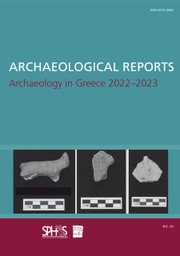No CrossRef data available.
Article contents
From tools to production: recent research on textile economies in Greece
Published online by Cambridge University Press: 22 December 2021
Abstract
The aim of this report is to provide a summary of the latest developments in the textile archaeology of Greece and the broader Aegean from the Neolithic through to the Roman period, focusing in particular on recent research on textile tools. Spindle-whorls and loomweights appeared in the Aegean during the Neolithic and by the Early Bronze Age weaving on the warp-weighted loom was well established across the region. Recent methodological advances allow the use of the physical characteristics of tools to estimate the quality of the yarns and textiles produced, even in the absence of extant fabrics. The shapes of spindle-whorls evolved with the introduction of wool fibre, which by the Middle Bronze Age had become the dominant textile raw material in the region. The spread of discoid loomweights from Crete to the wider Aegean has been linked to the wider Minoanization of the area during the Middle Bronze Age, as well as the mobility of weavers. Broader issues discussed in connection with textile production include urbanization, the spread of different textile cultures and the identification of specific practices (sealing) and previously unrecognized technologies (splicing), as well as the value of textiles enhanced by a variety of decorative techniques and purple dyeing.
- Type
- Archaeology in Greece 2020–2021
- Information
- Copyright
- © The Author(s), 2021. Published by Cambridge University Press on behalf of the Society for the Promotion of Hellenic Studies and the British School at Athens




